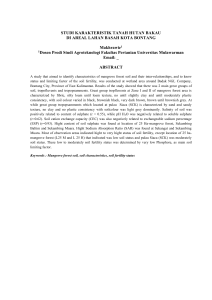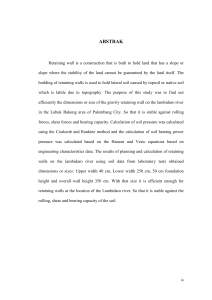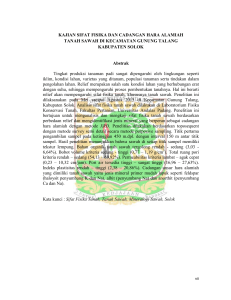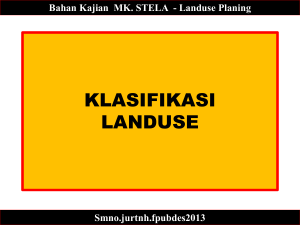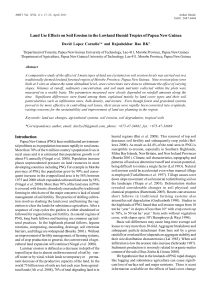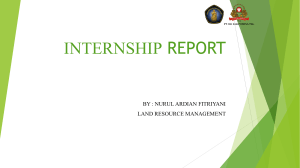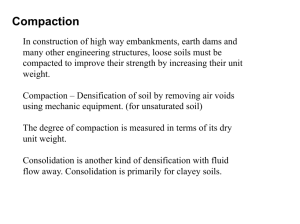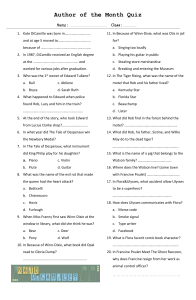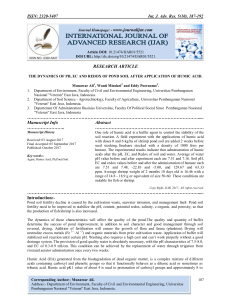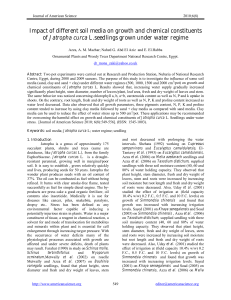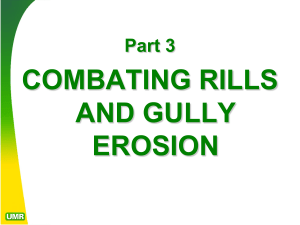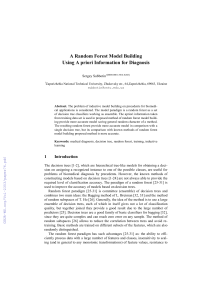Uploaded by
common.user72594
Flora Diversity & Soil Compaction in Bromo Tengger Semeru National Park
advertisement
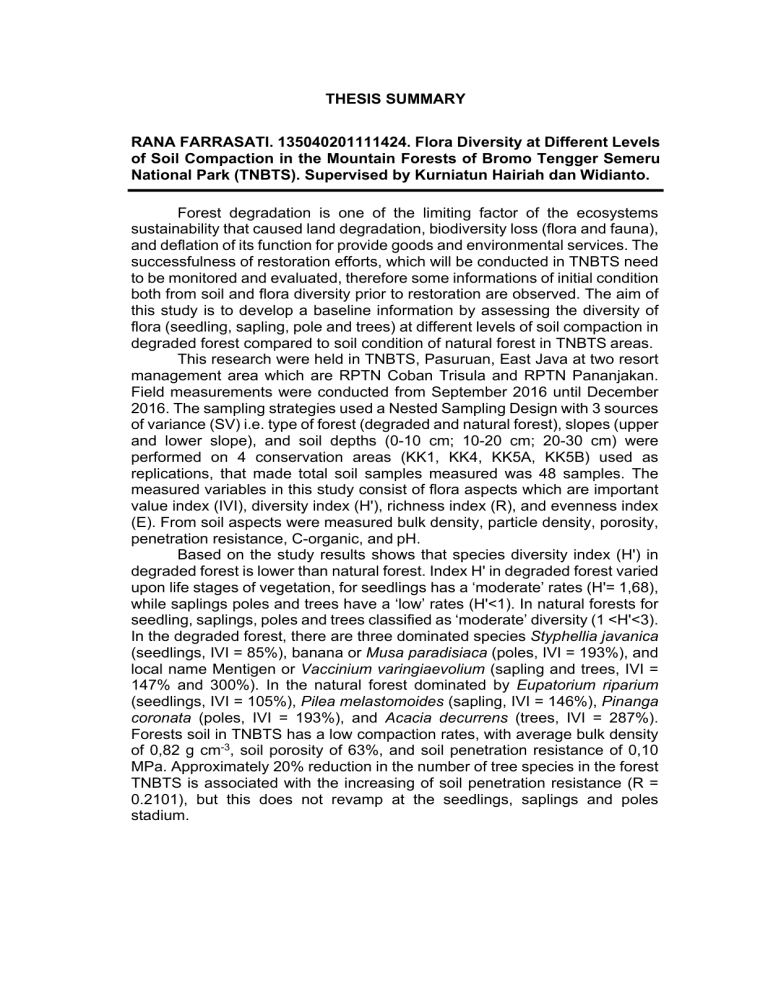
THESIS SUMMARY RANA FARRASATI. 135040201111424. Flora Diversity at Different Levels of Soil Compaction in the Mountain Forests of Bromo Tengger Semeru National Park (TNBTS). Supervised by Kurniatun Hairiah dan Widianto. Forest degradation is one of the limiting factor of the ecosystems sustainability that caused land degradation, biodiversity loss (flora and fauna), and deflation of its function for provide goods and environmental services. The successfulness of restoration efforts, which will be conducted in TNBTS need to be monitored and evaluated, therefore some informations of initial condition both from soil and flora diversity prior to restoration are observed. The aim of this study is to develop a baseline information by assessing the diversity of flora (seedling, sapling, pole and trees) at different levels of soil compaction in degraded forest compared to soil condition of natural forest in TNBTS areas. This research were held in TNBTS, Pasuruan, East Java at two resort management area which are RPTN Coban Trisula and RPTN Pananjakan. Field measurements were conducted from September 2016 until December 2016. The sampling strategies used a Nested Sampling Design with 3 sources of variance (SV) i.e. type of forest (degraded and natural forest), slopes (upper and lower slope), and soil depths (0-10 cm; 10-20 cm; 20-30 cm) were performed on 4 conservation areas (KK1, KK4, KK5A, KK5B) used as replications, that made total soil samples measured was 48 samples. The measured variables in this study consist of flora aspects which are important value index (IVI), diversity index (H'), richness index (R), and evenness index (E). From soil aspects were measured bulk density, particle density, porosity, penetration resistance, C-organic, and pH. Based on the study results shows that species diversity index (H') in degraded forest is lower than natural forest. Index H' in degraded forest varied upon life stages of vegetation, for seedlings has a ‘moderate’ rates (H'= 1,68), while saplings poles and trees have a ‘low’ rates (H'<1). In natural forests for seedling, saplings, poles and trees classified as ‘moderate’ diversity (1 <H'<3). In the degraded forest, there are three dominated species Styphellia javanica (seedlings, IVI = 85%), banana or Musa paradisiaca (poles, IVI = 193%), and local name Mentigen or Vaccinium varingiaevolium (sapling and trees, IVI = 147% and 300%). In the natural forest dominated by Eupatorium riparium (seedlings, IVI = 105%), Pilea melastomoides (sapling, IVI = 146%), Pinanga coronata (poles, IVI = 193%), and Acacia decurrens (trees, IVI = 287%). Forests soil in TNBTS has a low compaction rates, with average bulk density of 0,82 g cm-3, soil porosity of 63%, and soil penetration resistance of 0,10 MPa. Approximately 20% reduction in the number of tree species in the forest TNBTS is associated with the increasing of soil penetration resistance (R = 0.2101), but this does not revamp at the seedlings, saplings and poles stadium.
